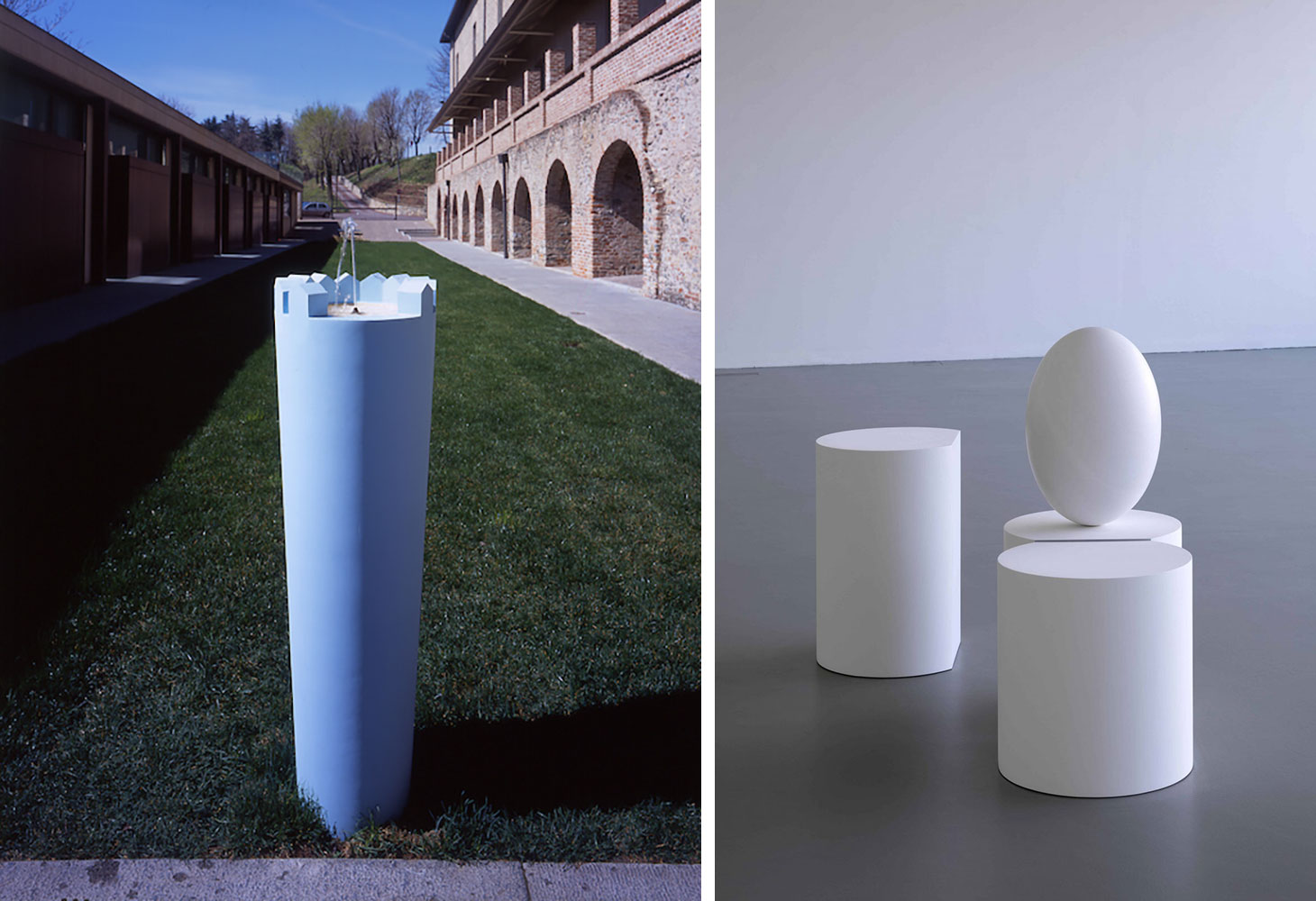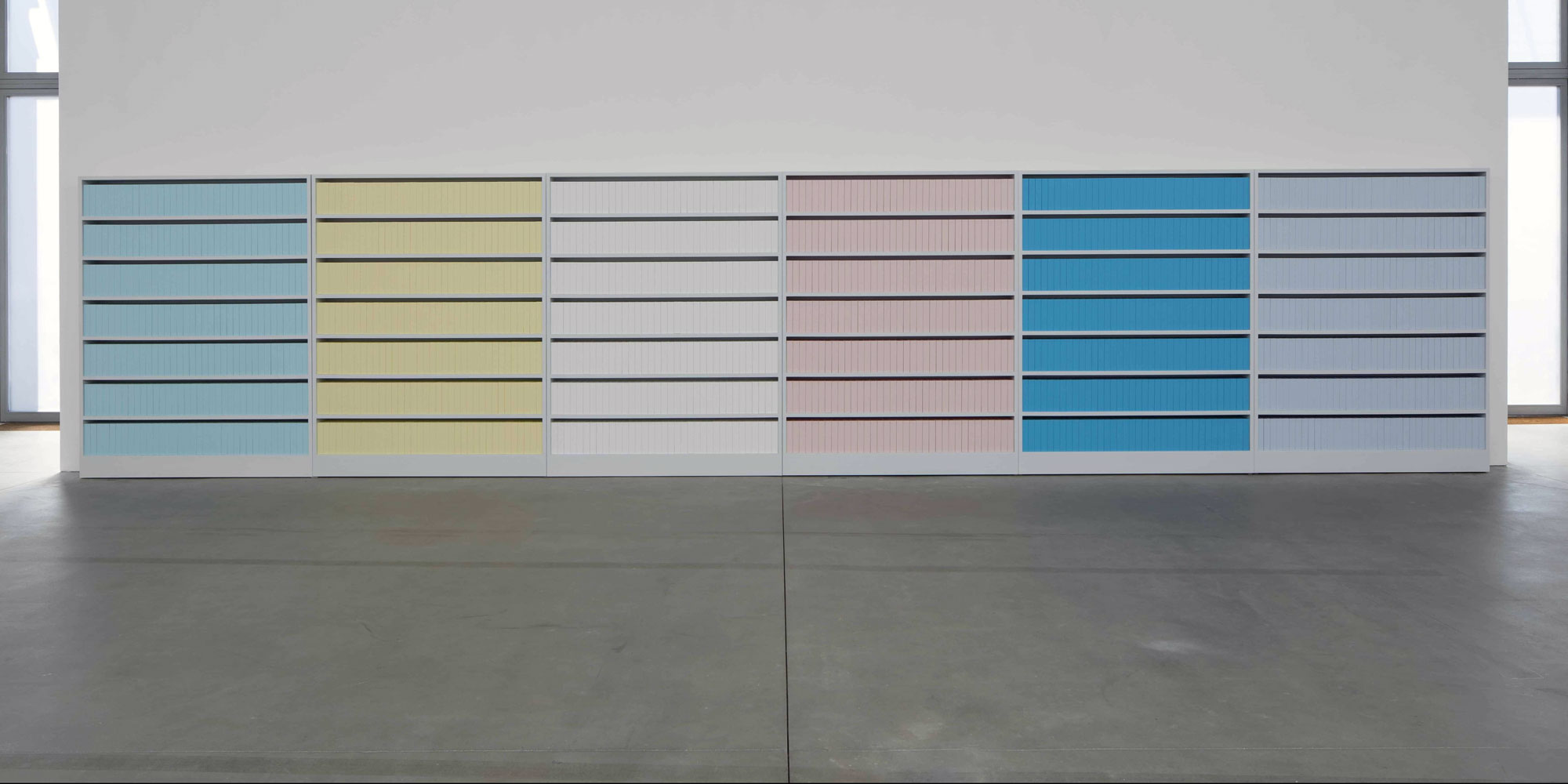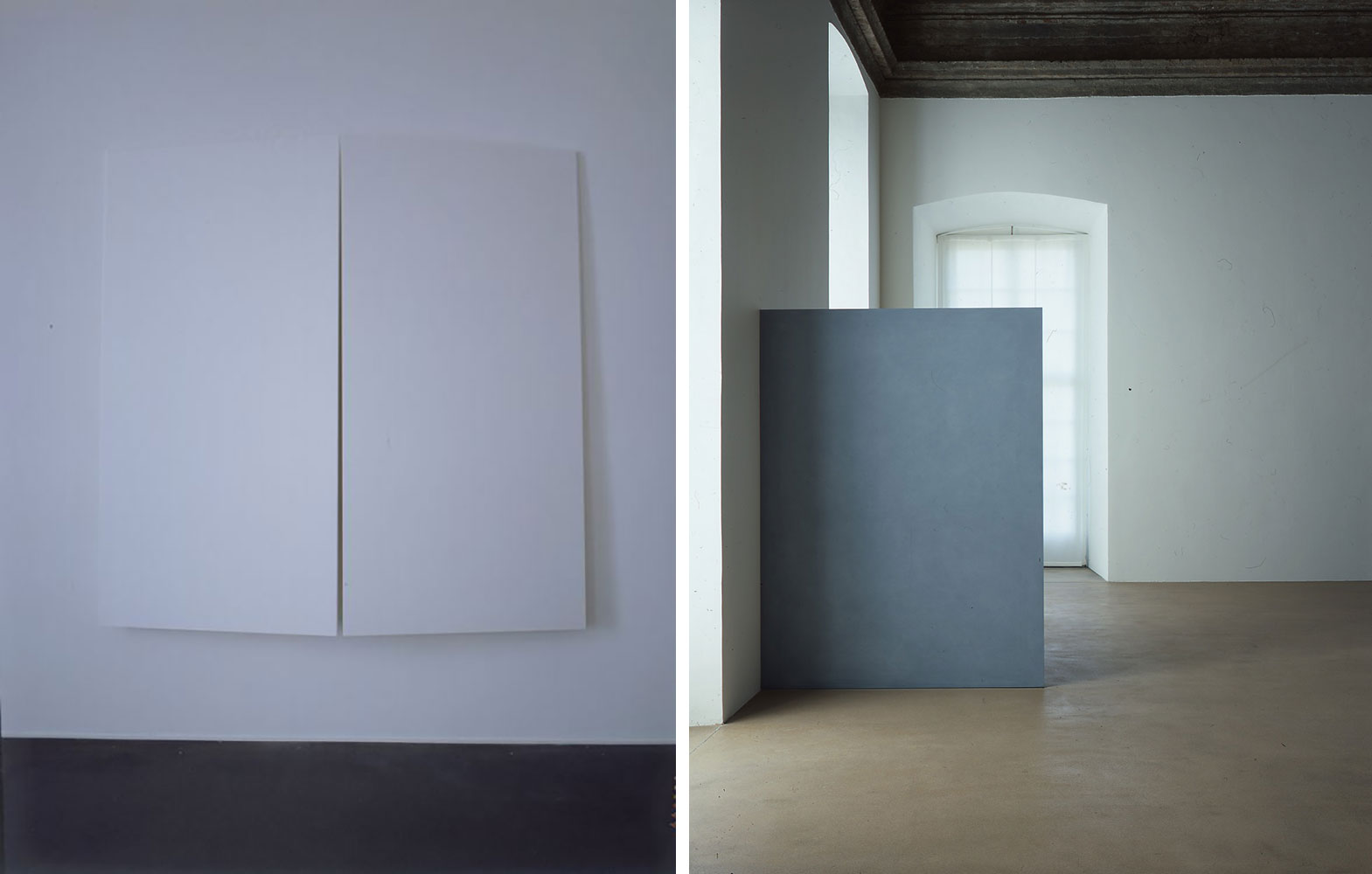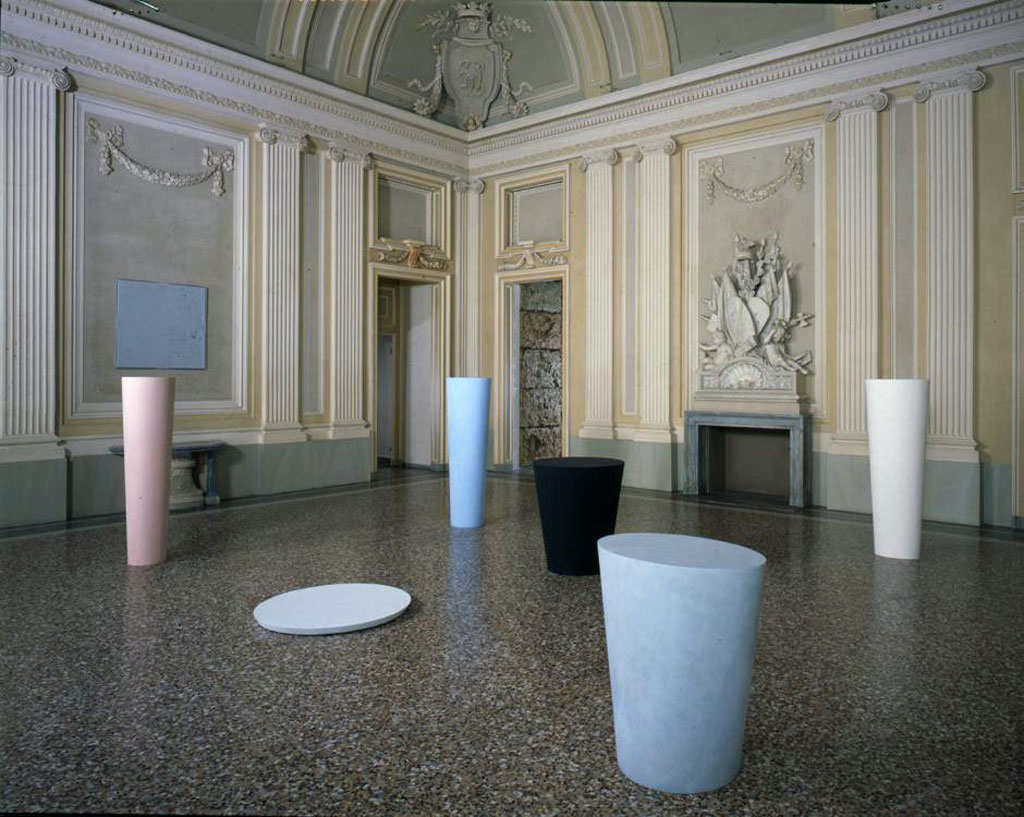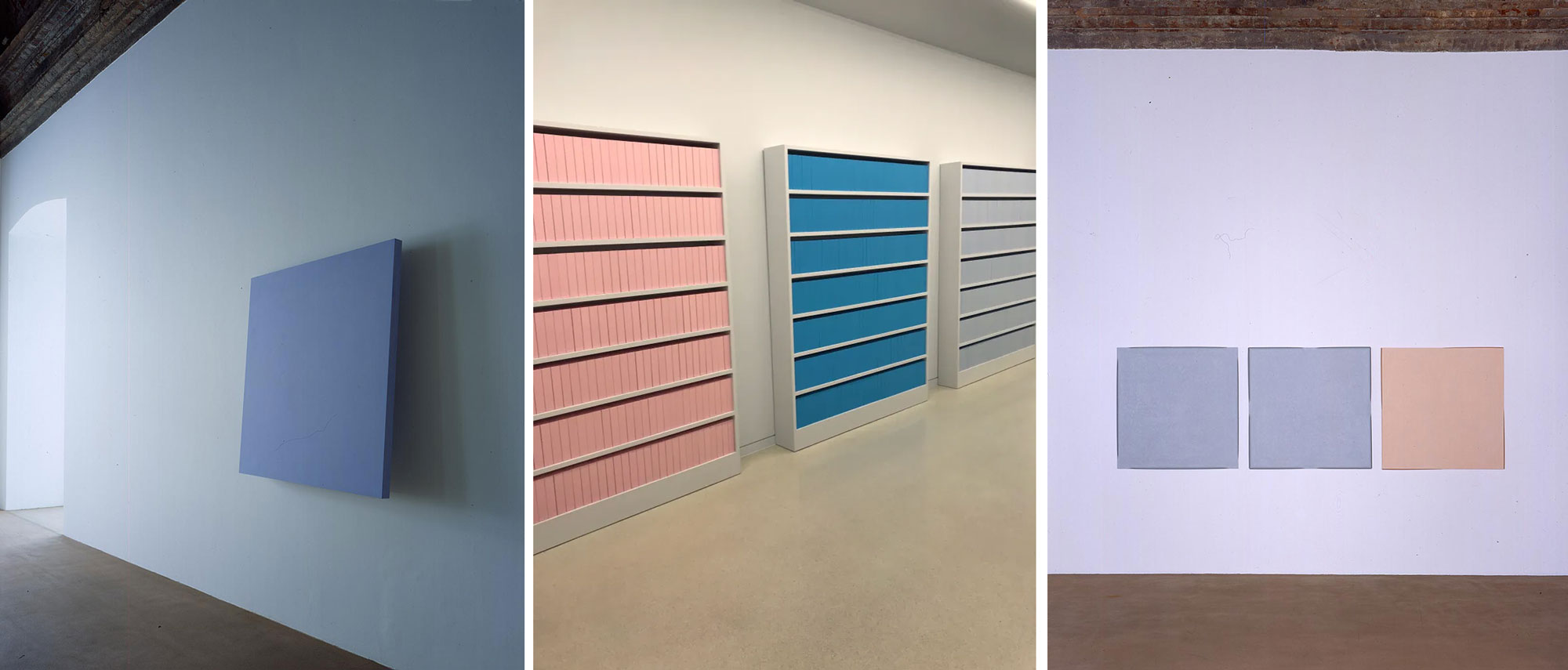TRACES: Ettore Spalletti
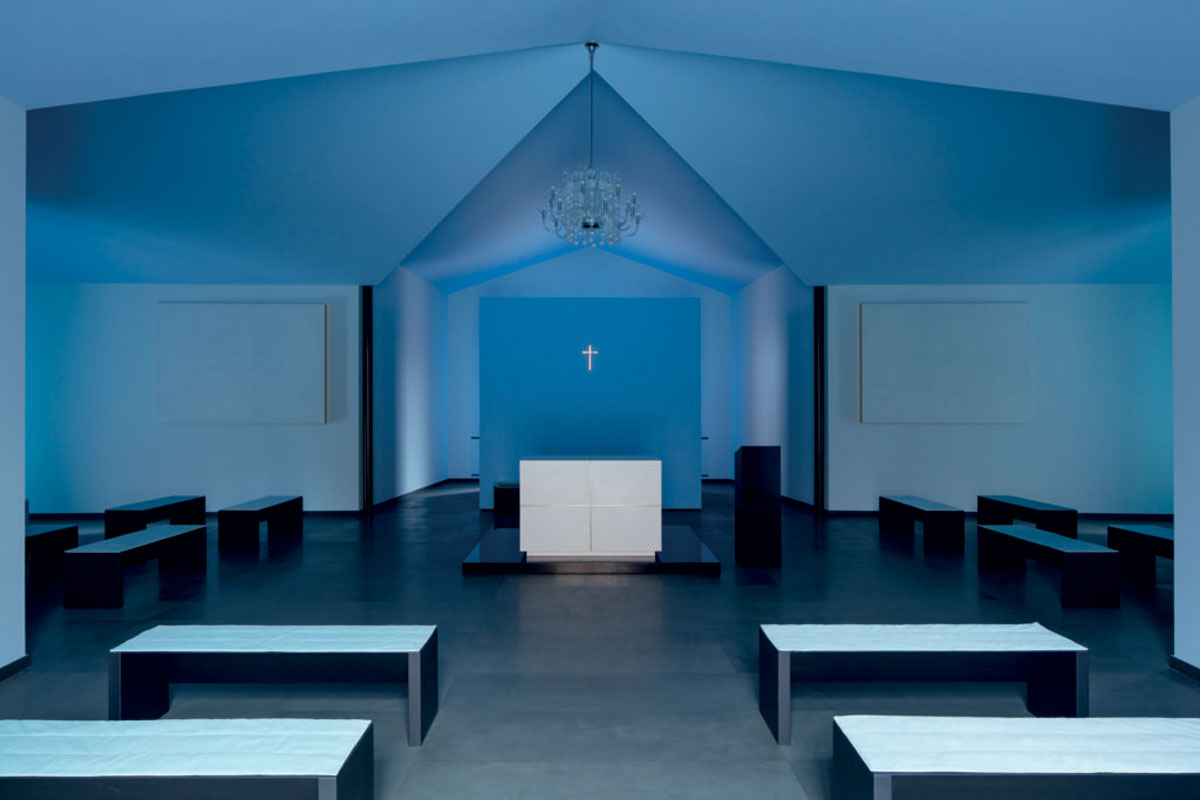 Today is the occasion to bear in mind Ettore Spalletti (26/1/1940-11/10/2019). Ascribable to the Minimal tendency, his research has focused since the late 1960s on the essentiality of the monochrome – applied on wood, marble or metal sculptures – which wants to reconfigure the light and color of the environment in which it is inserted. The pigment is applied on the whole surface of the work, to be finely manipulated by the artist with a light movement, which breaks the monotony of pure color and relates to the light, to the space in which the work is inserted. Through documents or interviews, starting with: moments and memories, we reveal out from the past-unknown sides of big personalities, who left their indelible traces in time and history…
Today is the occasion to bear in mind Ettore Spalletti (26/1/1940-11/10/2019). Ascribable to the Minimal tendency, his research has focused since the late 1960s on the essentiality of the monochrome – applied on wood, marble or metal sculptures – which wants to reconfigure the light and color of the environment in which it is inserted. The pigment is applied on the whole surface of the work, to be finely manipulated by the artist with a light movement, which breaks the monotony of pure color and relates to the light, to the space in which the work is inserted. Through documents or interviews, starting with: moments and memories, we reveal out from the past-unknown sides of big personalities, who left their indelible traces in time and history…
By Efi Michalarou
 Ettore Spalletti was born in Cappelle sul Tavo, a small town in the province of Pescara, in Abruzzo. After completing his studies, he moved to Rome to study scenography at the Academy of Fine Arts. After completing his studies, he moved to Rome to study scenography at the Academy of Fine Arts. He began to produce his first works in the 1960s, and during his artistic career he was present with his works in the most prestigious Italian and international exhibition venues. In fact, he participated in Documenta in Kassel (1982 and 1992) and in the Venice Biennale (1982, 1993, 1995 and 1997), while his personal exhibitions have been set up all over the world. Furthermore, in 2014 a complete retrospective was dedicated to him at the MAXXI – National Museum of XXI Century Arts in Rome, at the GAM – National Gallery of Modern Art in Turin and at the MADRE – Donnaregina Museum of Contemporary Art in Naples. Ettore Spalletti began his career when Arte Povera was revolutionizing visual culture in Italy and beyond. Spalletti developed a singular, solitary voice and a resultant body of work that exceeds any movement that circumscribes an artist to regional or ideological boundaries. His formal vocabulary has always melded and balanced painting and sculpture, form and color, interior and exterior space. Each work is the result of a rigorous process of layering of color at the same time of each day, to capture a specific tone that recalls an hour, a season, and the weather. According to Ettore Spalletti,blue is fundamentally an atmospheric color —one that exists as an environmental condition all around us, as depth rather than surface. He also considers pink the color of human flesh and a color that is in continuous mutation, never stable because it is subject to the fluctuations of the human spirit and intelligence. For the artist this flesh color is not a true color, and neither does blue exist in nature. It is difficult to find blue except as an impalpable reality that is depth rather than surface. These ideas capture the essence of Spalletti ’s art, which is made up of shapes and colors. His visual language is articulated in a space that is volumetric and architectural, but also diaphanous and light. It is an exploration directed toward an inner color that emerges as a characteristic of this language, nurtured by the echoes of his spiritual world. Spalletti ’s works (which includes paintings, drawings, and sculptures) are given life through the breath of a chromatism steeped in the moods and light of the artist ’s native region, the Abruzzi. In a lengthy process that calls for the preparation of a mixture made from glue, plaster, and pigment, the artist uses sandpaper to manipulate the depth of the color until he obtains a powder, which restores to the surface the impalpable condition and atmospheric impression to which he aspires.
Ettore Spalletti was born in Cappelle sul Tavo, a small town in the province of Pescara, in Abruzzo. After completing his studies, he moved to Rome to study scenography at the Academy of Fine Arts. After completing his studies, he moved to Rome to study scenography at the Academy of Fine Arts. He began to produce his first works in the 1960s, and during his artistic career he was present with his works in the most prestigious Italian and international exhibition venues. In fact, he participated in Documenta in Kassel (1982 and 1992) and in the Venice Biennale (1982, 1993, 1995 and 1997), while his personal exhibitions have been set up all over the world. Furthermore, in 2014 a complete retrospective was dedicated to him at the MAXXI – National Museum of XXI Century Arts in Rome, at the GAM – National Gallery of Modern Art in Turin and at the MADRE – Donnaregina Museum of Contemporary Art in Naples. Ettore Spalletti began his career when Arte Povera was revolutionizing visual culture in Italy and beyond. Spalletti developed a singular, solitary voice and a resultant body of work that exceeds any movement that circumscribes an artist to regional or ideological boundaries. His formal vocabulary has always melded and balanced painting and sculpture, form and color, interior and exterior space. Each work is the result of a rigorous process of layering of color at the same time of each day, to capture a specific tone that recalls an hour, a season, and the weather. According to Ettore Spalletti,blue is fundamentally an atmospheric color —one that exists as an environmental condition all around us, as depth rather than surface. He also considers pink the color of human flesh and a color that is in continuous mutation, never stable because it is subject to the fluctuations of the human spirit and intelligence. For the artist this flesh color is not a true color, and neither does blue exist in nature. It is difficult to find blue except as an impalpable reality that is depth rather than surface. These ideas capture the essence of Spalletti ’s art, which is made up of shapes and colors. His visual language is articulated in a space that is volumetric and architectural, but also diaphanous and light. It is an exploration directed toward an inner color that emerges as a characteristic of this language, nurtured by the echoes of his spiritual world. Spalletti ’s works (which includes paintings, drawings, and sculptures) are given life through the breath of a chromatism steeped in the moods and light of the artist ’s native region, the Abruzzi. In a lengthy process that calls for the preparation of a mixture made from glue, plaster, and pigment, the artist uses sandpaper to manipulate the depth of the color until he obtains a powder, which restores to the surface the impalpable condition and atmospheric impression to which he aspires.
Spalletti ’s pink, blues, grays, whites, greens, and yellows, freed from the heaviness of the material, define new volumes; square, rectangular, and rotund bodies, geometric figures, and shapes of objects removed from everyday reality animate the fantasy of his expressive world and remake the idea of the place in which they are located. The works in the collection of the Castello are evidence of the ways in which this attention, intrinsic to his works, redefines and reinvents the spaces they inhabit. “Presenza stanza” (1978) is a painting on wood panel that loses the connotations of a frontally viewed and static picture to become an architecture that moves in space. Its solitary and enigmatic vertical presence establishes a strong relationship with its surroundings, delineating the boundaries of the space in which it is located. “Anfora Bacile,Vasi” (1982) expands three-dimensionally, distributing itself in space according to a rhythmic sequence. These sculptures abandon the form of ordinary objects to become absolute bodies whose identity resides in their chromatic presence. They are animated forms that, with their sensuousness, modulate the material, volumes, and architecture. Spalletti ’s art is apparently solitary and silent, but whoever contemplates it is party to the noises of its private world and the discovery of its inner landscapes. They are containers of feelings and sensations, which we rediscover beneath the depth of his surfaces, under the precious substance that gleams in the outlines of his volumes. “Sogno Dispari” (1983), “Dono” (1991) and “Muro, eco rosso Azzurro” (2003) establish a principle of asymmetry. The works exist at a distance from the wall and are directed outward, suggesting tension and instability. Staggered levels, curved edges, and subtle alterations compromise a geometric rigor to which the artist ’s language only apparently submits. The surface of these works is not flat or homogeneous or impersonal, but rather animated and personalized by the private dimension of their creator. In “Quartetto, rosso porpora” (1991), the pastiness of the surface effects the perception of the light, conferring a tactile dimension on the work. Light rediscovers color, a living presence, which modulates and defines a painting which is in continuous dialogue with the surrounding world. The idea of shaping space in order to create new visions is also seen in individual works, such as “Fonte” (1986), which is the transformation of a sculpture into an urban object that redesigns the space in a non-monumental key, and “Scoglio” (1997) which is a form that opens up to a view of a seascape. The latter’s elementary structure, which represents a simple cube but recovers “another ” dimension in terms of wonder and amazement, opening up to the immense depths of the sea, reveals the artist ’s interest in giving voice to his own dreams and ideas and in evoking places of the spirit, territories layered in memory, which preserve a recollection of suggestive and poetic images. “Vaso” (1981), summarizes Spalletti ’s desire to reinvent a sort of living sculpture that breathes the materiality of its colors and is animated with the personality of its creator. In this, which is one of the few photographic works he has made, a man (perhaps the artist) waters a geometric figure (perhaps one of his sculptures), which is thus confirmed as a precious substance, a living organism to be tended and nurtured.









